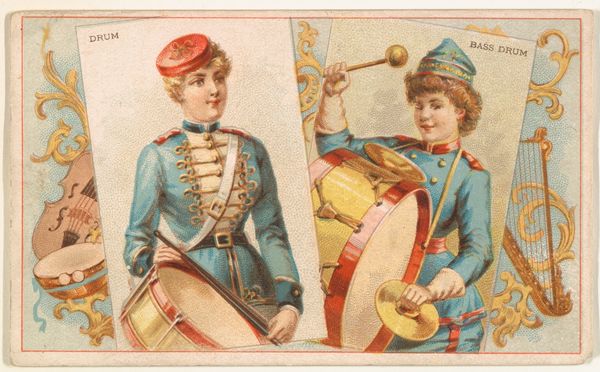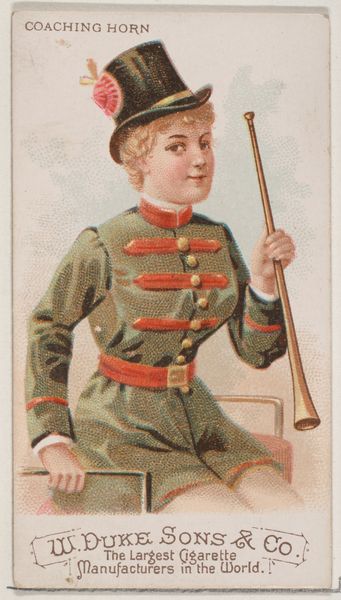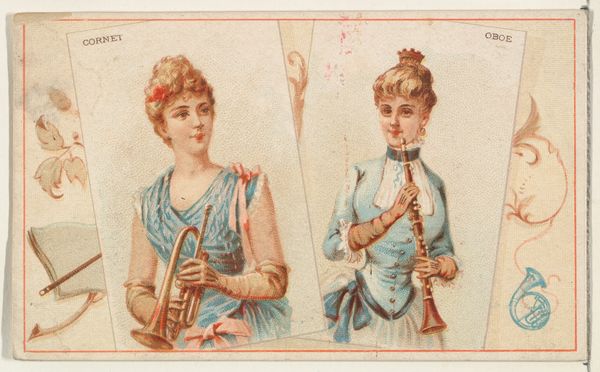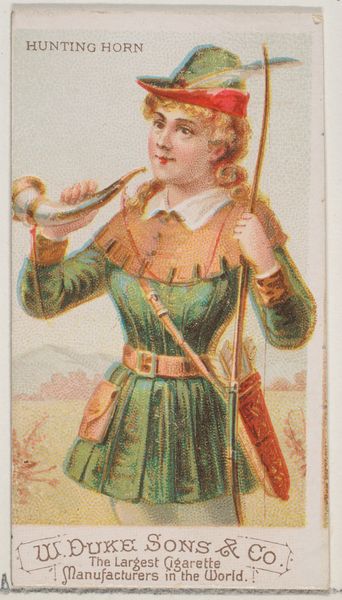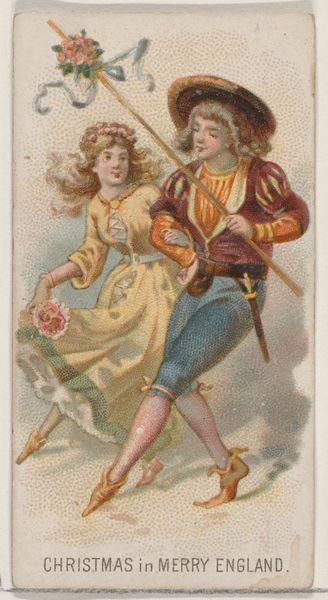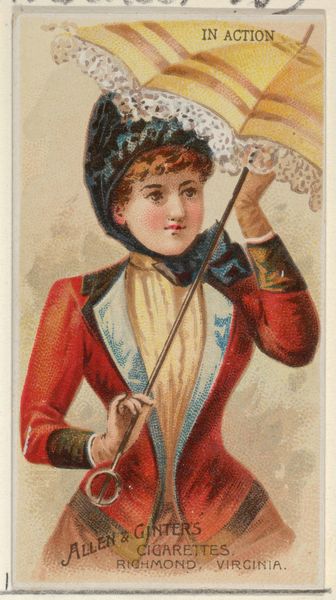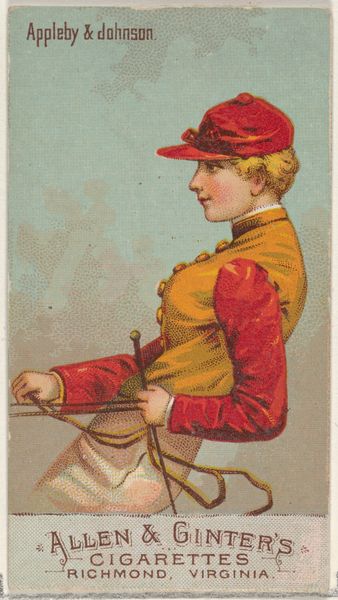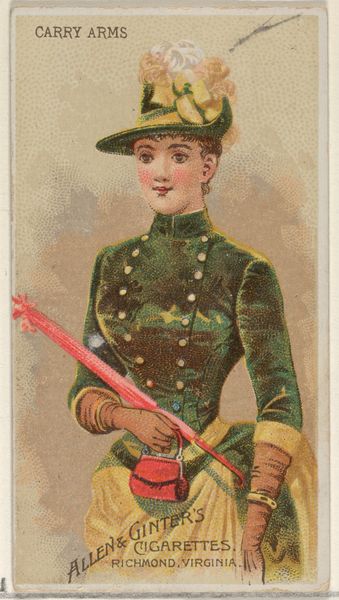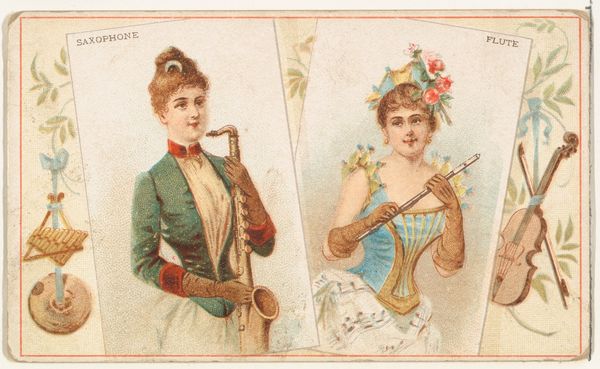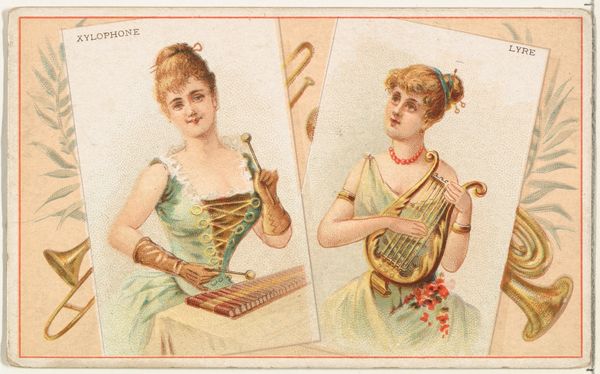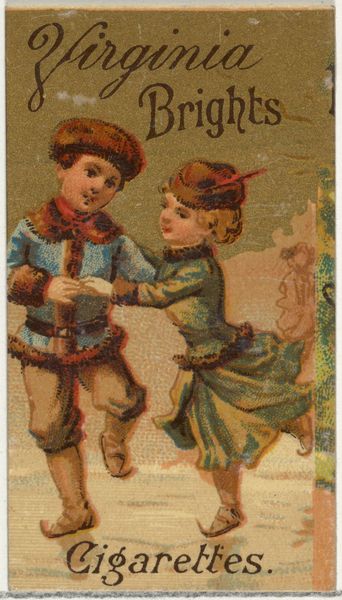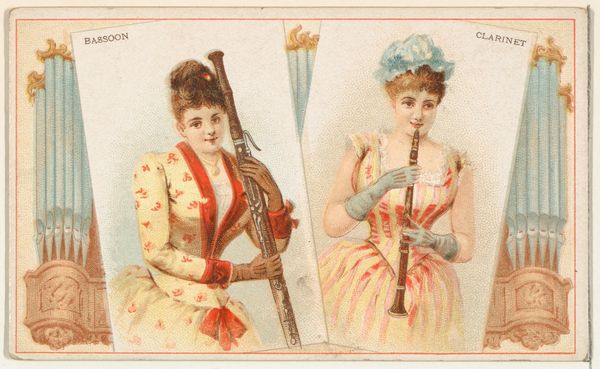
Coaching Horn and French Horn, from the Musical Instruments series (N121) issued by Duke Sons & Co. to promote Honest Long Cut Tobacco 1888
0:00
0:00
drawing, coloured-pencil, print
#
portrait
#
drawing
#
coloured-pencil
# print
#
coloured pencil
#
19th century
#
genre-painting
Dimensions: Sheet: 2 1/2 × 4 1/16 in. (6.4 × 10.3 cm)
Copyright: Public Domain
Curator: Immediately, what strikes me is how decorative this advertisement feels – it’s such an artful arrangement, even with its commercial purpose. Editor: Precisely! Let's delve into this visual document a bit further. What we have here is a print titled "Coaching Horn and French Horn, from the Musical Instruments series (N121) issued by Duke Sons & Co. to promote Honest Long Cut Tobacco." The print dates back to 1888 and is currently held at the Metropolitan Museum of Art. Curator: So, this piece operates within that fascinating liminal space of late 19th-century advertising; how can we consider the symbology? Notice how it depicts two figures, each poised elegantly with their respective horns, in front of sketched outlines of their horns too. Editor: I see that the composition places the two figures almost like contrasting studies. The choice of coloured pencil for this commercial print certainly lends itself to a softened realism that’s less about capturing an exact likeness, but rather suggesting certain ideals of poise and refinement associated with music. Curator: Absolutely. And these musical instruments themselves—the coaching horn with its associations of transport, open air, and even social hierarchy; then there’s the French horn linked with sophistication. In short, these could represent contrasting lifestyles associated with social class distinctions, but accessible by consuming tobacco. Editor: Intriguing! What speaks to me, especially when you talk about transport and lifestyles, is that this imagery isn't just about promoting tobacco; it’s offering access into a refined world, which seems carefully planned via color and texture. Curator: Notice, too, that Duke Sons & Co. chose two women. Each presents her instrument—an interesting gesture of ennoblement. It would certainly give me pause and inspire curiosity about the manufacturer. What are your final reflections? Editor: For me, it highlights the period’s intricate dance between commercial motives and artistry. In this work we see the subtle visual tactics that would evolve throughout commercial design. It certainly offers a glimpse into how beauty and refinement, not unlike musical sound, could be branded. Curator: I agree. For me, it speaks of visual cultural continuity: the subtle, lingering effects of iconography and our reading habits concerning symbolism, taste, and pleasure across generations.
Comments
No comments
Be the first to comment and join the conversation on the ultimate creative platform.
